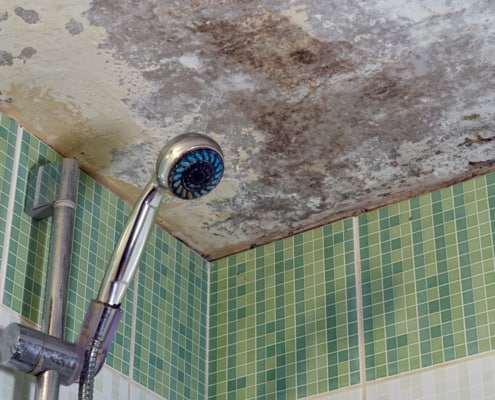Discover the hidden dangers lurking above with the question, “Is Bathroom Ceiling Mold Dangerous?” This comprehensive guide not only addresses the potential health risks but also provides insights into prevention and effective remediation. Dive into the world of bathroom mold to safeguard your well-being and home integrity.

Introduction: Demystifying the Menace – Is Bathroom Ceiling Mold Dangerous?
The presence of mold in any part of your home raises concerns, but when it infiltrates the bathroom ceiling, the stakes may be higher. In this guide, we explore the question, “Is Bathroom Ceiling Mold Dangerous?” unraveling the potential health hazards and structural risks associated with this pervasive issue.
Assessing the Risks – Is Bathroom Ceiling Mold Dangerous?
Understanding the Types of Mold
Not all molds are created equal. This section delves into the various types of mold that can manifest on bathroom ceilings, with a focus on those potentially harmful to health and home structures.
Health Implications of Bathroom Ceiling Mold
- Respiratory Issues: Certain molds release spores that can trigger or exacerbate respiratory conditions, including allergies, asthma, or other respiratory infections.
- Skin Irritations: Prolonged exposure to mold can cause skin irritations, such as rashes or itchiness, especially for individuals with sensitive skin.
- Allergic Reactions: Mold exposure can lead to allergic reactions, including sneezing, watery eyes, and nasal congestion.
Structural Risks of Bathroom Ceiling Mold
- Surface Degradation: Mold can cause deterioration of the ceiling surface, compromising its integrity and aesthetic appeal.
- Weakening of Structures: Prolonged mold growth may weaken the structural components of the ceiling, posing a risk of collapse or damage.
Prevention and Remediation Strategies for Bathroom Ceiling Mold
- Proper Ventilation: Ensure adequate ventilation in the bathroom by using exhaust fans, opening windows, or installing ventilation systems to reduce humidity levels.
- Regular Cleaning: Adopt a routine cleaning schedule to prevent mold growth. Focus on areas prone to moisture, such as ceilings, walls, and corners.
- Prompt Repairs: Address water leaks or damage promptly. Repair any plumbing issues, roof leaks, or structural damage contributing to moisture accumulation.
- Use Mold-Resistant Materials: Consider using mold-resistant paint or materials for bathroom ceilings to create an inhospitable environment for mold growth.
- Professional Remediation: If mold infestation is extensive, seek professional mold remediation services to ensure thorough and safe removal.
Recognizing and Dealing With Bathroom Ceiling Mold
- Identification: Learn how to identify signs of mold on your bathroom ceiling, including discoloration, musty odors, or visible mold growth.
- DIY Remediation: For minor mold issues, explore DIY remediation methods using safe cleaning agents and protective gear.
- When to Consult Professionals: Understand the indicators that necessitate professional intervention, such as extensive mold growth, recurring issues, or health concerns.
Conclusion: Safeguarding Your Home and Health from Bathroom Ceiling Mold
In conclusion, the question, “Is Bathroom Ceiling Mold Dangerous?” highlights the importance of proactive measures to protect both your health and the structural integrity of your home. By understanding the risks, implementing preventative strategies, and addressing mold issues promptly, you can create a healthier and safer living environment.